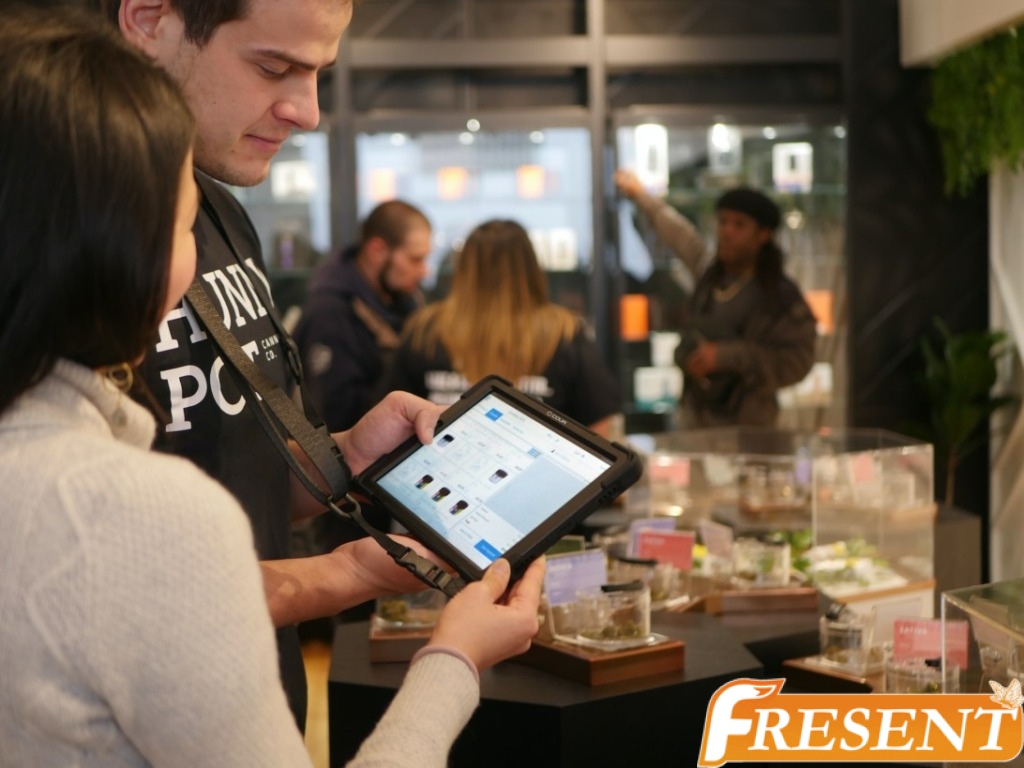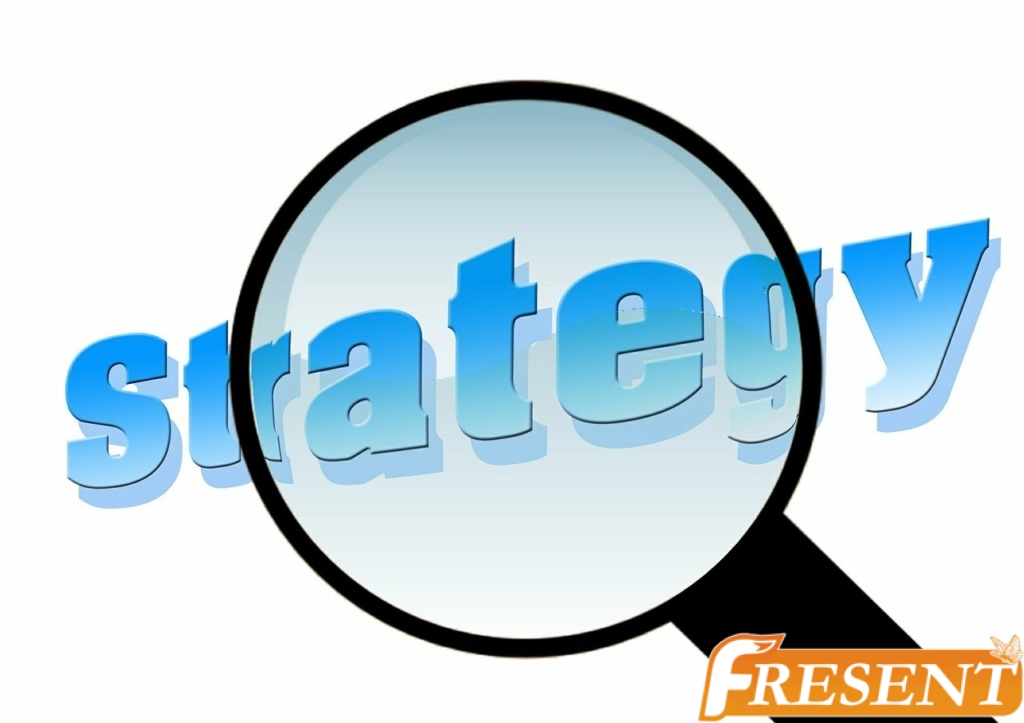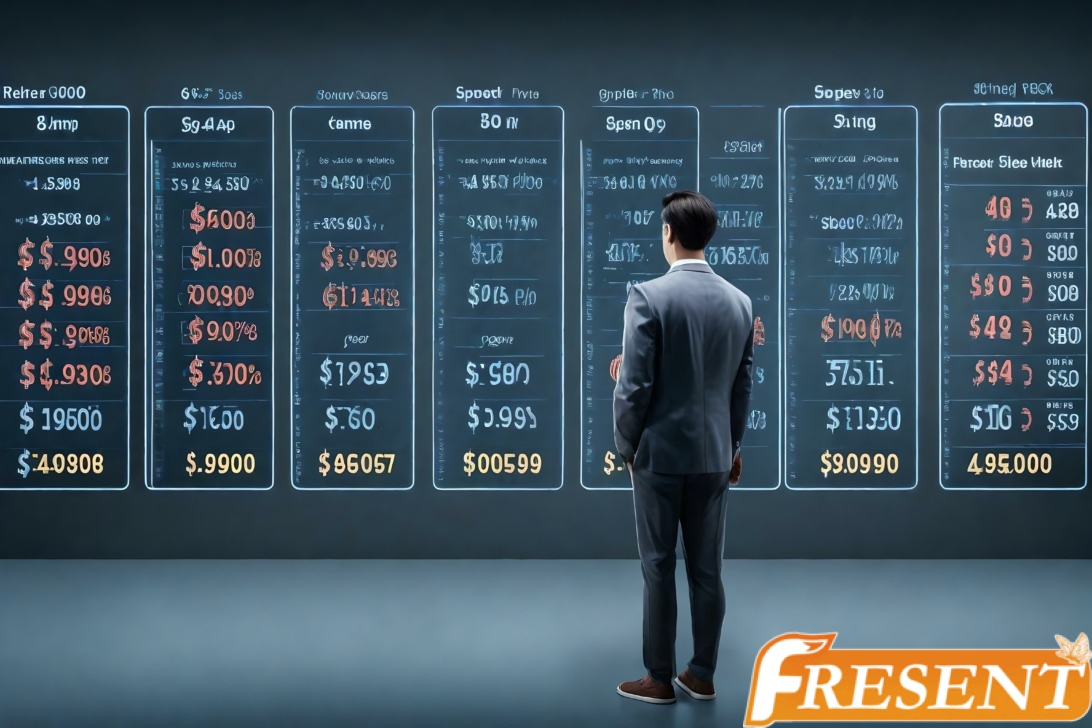If you’re running a Software as a Service (SaaS) business, pricing is one of the most critical aspects of your strategy. Getting it right can make or break your success, and it’s not just about setting a price that covers your costs and generates some profit. It’s also about understanding consumer behavior, decision-making processes, and the psychology behind them.
In this article, we’ll explore SaaS pricing psychology in-depth to help you understand how consumers think and what drives their decisions. We’ll discuss the importance of pricing strategy, the principles of scarcity and social proof, A/B testing techniques, common mistakes to avoid when implementing pricing strategies, and much more. By the end of this article, you’ll have a solid grasp of SaaS pricing psychology concepts that will help you optimize your pricing strategy for maximum success.
Introduction to Pricing Psychology
You’re going to love learning about pricing psychology because it will help you understand how consumers make decisions and how you can use that understanding to price your Saas product effectively. Pricing psychology is the study of how people perceive prices and make buying decisions based on those perceptions. It’s a fascinating subject that has many applications in marketing and implications for sales.
One key concept in pricing psychology is the idea of perceived value. Consumers often base their decision to purchase a product on the value they perceive to be getting from it. This perception can be influenced by a number of factors, including the product’s features, quality, brand image, and price point. By understanding these factors and how they influence consumer behavior, you can create a pricing strategy that maximizes perceived value.
Another important aspect of pricing psychology is anchoring. Anchoring refers to the tendency for people to rely heavily on the first piece of information they receive when making a decision. In terms of pricing, this means that consumers may anchor their perception of what is an acceptable price based on the first price point they see for a similar product or service. Understanding this phenomenon can help you set your initial prices strategically to guide consumer perception towards your desired outcome.
Understanding consumer behavior is essential for any business looking to succeed in today’s competitive marketplace. By incorporating insights from pricing psychology into your Saas pricing strategy, you’ll be well positioned to meet your customers’ needs while maximizing profitability for your business. Now let’s dive deeper into understanding consumer behavior and its impact on Saas pricing strategies!

Understanding Consumer Behavior
When making purchasing decisions, consumers often balance rational and emotional factors. Understanding how these two types of decision-making work together can help you craft a pricing strategy that resonates with potential customers. Anchoring and framing techniques can also play a significant role in influencing consumer behavior. By presenting your product in a particular light, you can make it more appealing to buyers. Finally, perception of value is critical when setting prices. Consumers will be more likely to pay higher prices if they perceive your product as worth the cost.
Rational vs Emotional Decision Making
Oh sure, go ahead and make your pricing decisions based solely on logic and reason. Who needs emotions when it comes to making important business choices anyway? Well, the truth is that rational decision-making is only part of the story. In fact, research suggests that people are often more influenced by their emotions than by facts or figures. When it comes to saas pricing psychology, this means understanding the interplay between rational and emotional decision-making processes.
To help you better grasp this concept, here are three examples of how cognitive biases can impact saas pricing:
- Anchoring effect: This occurs when people rely too heavily on the first piece of information they receive when making a decision. For example, if you offer a low-priced plan first, customers may be less likely to choose a more expensive option – even if it offers more value.
- Framing effect: The way you present your pricing options can also influence customers’ perceptions of value. By framing prices in terms of “savings” or “discounts,” for instance, you can make customers feel like they’re getting a good deal.
- Loss aversion bias: People tend to be more motivated by avoiding losses than gaining rewards. So rather than emphasizing what customers will gain from upgrading their plan (e.g., more features), highlight what they’ll lose if they don’t (e.g., limited functionality).
Understanding these cognitive biases is crucial for creating effective saas pricing strategies that resonate with your target audience’s emotional as well as rational needs and desires. With this knowledge in mind, let’s dive into the next section about anchoring and framing techniques for optimizing your pricing model!
Anchoring and Framing
Get ready to learn how anchoring and framing techniques can help you optimize your pricing model and influence customers’ perceptions of value! Anchoring and framing are cognitive biases that affect the way people perceive prices. Anchoring refers to the tendency of individuals to rely too heavily on the first piece of information they receive when making a decision. This means that if you start by presenting a high price, customers will be more willing to pay a higher price than if you had started with a lower one.
Framing, on the other hand, involves presenting information in a way that influences how people perceive it. For example, instead of saying “this product costs $100,” you could say “this product is only $100.” The latter phrasing makes it seem like a good deal because it’s emphasizing what the customer is gaining rather than what they’re losing. By using these cognitive biases in your pricing strategies, you can create an environment where customers feel like they’re getting more value for their money without actually changing anything about the product itself.
Now that we’ve covered anchoring and framing as cognitive biases in pricing strategies, let’s move on to discussing how these techniques can shape perception of value for your saas products.
Perception of Value
You can enhance your customers’ perception of the value they are getting from your product by utilizing anchoring and framing techniques in your communication strategies. As you communicate the price of your product, it’s important to keep in mind the perceived value drivers that influence consumer price sensitivity. Here are three ways to effectively frame the value of your SaaS product:
- Highlight unique features: Emphasize what sets your product apart from competitors by highlighting unique features and capabilities that solve specific problems for customers.
- Provide social proof: Use testimonials, case studies, and customer success stories to demonstrate how other businesses have benefited from using your product.
- Offer a free trial: By offering a free trial or demo, you allow potential customers to experience the full value of your product before committing to a purchase.
By using these techniques, you can help customers understand the true value they are receiving from your SaaS product. This not only increases their willingness to pay but also helps establish trust and loyalty with your brand.
As you consider how to best position and price your SaaS product, it’s important to remember that pricing strategy plays a critical role in shaping consumer behavior and decision making. By understanding consumer psychology and utilizing proven techniques like anchoring, framing, and perception drivers, you can create an effective pricing strategy that maximizes revenue while still delivering excellent value for customers. In the next section, we’ll explore why having a solid pricing strategy is so important for SaaS businesses looking to succeed in today’s competitive market.

The Importance of Pricing Strategy
When it comes to pricing strategy, understanding its impact on sales and revenue is crucial. By implementing the right pricing model, you can drive more profit and attract more customers. From freemium to value-based pricing, there are different models that suit different businesses. So, it’s important to choose the right one for your SaaS product in order to maximize your profits and keep your customers happy.
Impact on Sales and Revenue
The impact of pricing psychology on sales and revenue can be significant, with subtle changes in pricing strategies leading to increased customer acquisition and retention. By understanding consumer behavior and decision-making processes, you can tailor your pricing strategy to maximize profits. Here are three ways that pricing psychology can impact your sales and revenue generation:
- Anchoring: Customers tend to rely heavily on the first price they see when making a purchase decision. By using high-priced options as anchors for lower-priced alternatives, you can make them seem like more reasonable choices.
- Scarcity: People place higher value on items that are scarce or limited in quantity. By creating a sense of urgency around your products or services, you can encourage customers to make purchases quickly.
- Bundling: Offering multiple products or services together at a bundled price can increase perceived value for the customer while also increasing revenue for your business.
Overall, understanding how pricing psychology impacts sales and revenue is crucial for any SaaS business looking to thrive in their market. With this knowledge, you’ll be better equipped to create effective pricing strategies that lead to increased profitability. In the next section, we’ll explore different pricing models that you can use to optimize your strategy even further.
Different Pricing Models
Now that you understand how saas pricing psychology can impact your sales and revenue, it’s time to explore different pricing models. There are two main types of models: subscription-based and usage-based pricing.
A subscription model charges customers a flat fee for access to the software on a regular basis, usually monthly or yearly. This type of pricing is ideal for companies with predictable usage patterns or recurring needs. On the other hand, usage-based pricing charges customers based on how much they use the software. This model works well for businesses that have varying levels of demand or usage throughout the year.
Another popular approach is tiered pricing models, which offer different options and features at various price points. This allows businesses to cater to customers with different budgets and needs without sacrificing profitability.
As you consider these different pricing models, keep in mind that each has its own advantages and disadvantages. By choosing the right one for your business, you can optimize profits while providing excellent value to your customers. With this understanding in place, let’s now dive into another key principle of saas pricing psychology: the principle of scarcity.
Principle of Scarcity
Scarcity is like the last slice of pizza at a party – everyone wants it because it’s limited. This principle is widely used in SaaS pricing strategies to influence consumer behavior. By creating a sense of urgency and scarcity, businesses can persuade customers to make faster purchase decisions.
One common scarcity tactic is offering limited-time deals or discounts. When consumers believe that an opportunity may vanish soon, they are more likely to act quickly and make a purchase. Another way businesses use this principle is by limiting the quantity of products available for sale. By presenting an item as rare or hard to find, companies can increase its perceived value in the eyes of consumers.
However, companies must be careful when using this strategy as too much scarcity can lead to distrust and negative reactions from customers. It’s important to strike a balance between making offers exclusive enough to create demand but not so limited that it appears manipulative or dishonest. Understanding how scarcity works and how it affects consumer behavior can help SaaS companies use this pricing tactic effectively while building trust with their customers.
As you consider implementing the principle of scarcity in your pricing strategy, remember that social proof also plays an important role in shaping consumer behavior. Next, we’ll explore how leveraging social proof can help you influence potential buyers and grow your business even further.
Principle of Social Proof
Utilizing the principle of social proof in your marketing strategy can greatly enhance your ability to influence and persuade potential customers. Social proof refers to the idea that people are more likely to conform or adopt a certain behavior if they see others doing it. This principle is rooted in the psychology of conformity, where individuals tend to follow what others are doing as a way of validating their own choices.
Social proof examples can be seen in various forms such as customer reviews, testimonials, case studies, and social media mentions. These types of social proof help build trust and credibility with potential customers by providing evidence that other people have already tried and tested your product or service. By showcasing positive experiences from real customers, you can effectively communicate the value proposition of your offering while also addressing any concerns or objections that might arise.
Incorporating social proof in marketing strategies is not only effective but also cost-efficient. It allows you to leverage existing resources such as satisfied customers and user-generated content to attract new business. Additionally, implementing social proof can help differentiate your brand from competitors who may not be utilizing this tactic. In summary, incorporating social proof into your marketing strategy is a powerful way to build trust with potential customers and increase conversions.
As we move onto the next subtopic about the principle of reciprocity, keep in mind how using social proof can complement this concept. By providing value upfront through content or offers before asking for anything in return, you can create a sense of obligation for potential customers to reciprocate by making a purchase or taking another desired action. Incorporating both principles into your overall strategy can lead to even greater success in driving sales and building long-term customer relationships.
Principle of Reciprocity
You’re probably used to the idea of receiving something in return when you give, but have you considered how the principle of reciprocity can benefit your marketing efforts? Simply put, reciprocity is the tendency for people to feel obligated to give back to others when they receive something. This principle can be applied to your SaaS pricing strategies by offering free trials, discounts, or other incentives that encourage potential customers to try your product and then make a purchase.
Reciprocity examples in marketing include giving out free samples or demos before asking customers to commit to a purchase. By doing so, you are providing value upfront and building trust with potential buyers. Another example is offering loyalty rewards or referral bonuses for existing customers who refer new business to your company. These tactics not only encourage repeat business but also help spread awareness about your brand through word-of-mouth advertising.
Incorporating the principle of reciprocity into your SaaS pricing strategy can lead to increased customer satisfaction and loyalty. Customers are more likely to stick with a company that has provided them with value upfront and made them feel appreciated. As you move on to exploring the principle of authority in marketing, keep in mind how reciprocity can help establish credibility and trust with potential buyers.
Transitioning into our next subtopic, it’s important to note that establishing yourself as an authority figure in your industry can significantly impact consumer behavior and decision making. Let’s take a closer look at how the principle of authority can be leveraged in SaaS pricing strategies.
Principle of Authority
Now, imagine that you have established yourself as an authority figure in your industry – how can this impact the way potential customers perceive your product or service? The influence of authority figures is a key factor in consumer behavior and decision making. When consumers perceive a brand or company as being led by experts or thought leaders, they are more likely to trust that company’s products and services.
Here are four ways that the principle of authority can impact trust building:
- Authority signals expertise: When potential customers see that your business is run by industry experts or respected authorities, it signals to them that your product or service is of high quality.
- Authority creates credibility: People tend to trust those who are seen as having expertise in their field. By positioning yourself as an authority figure in your industry, you can build credibility and establish trust with potential customers.
- Authority builds brand recognition: Companies with recognized authorities at the helm tend to be more memorable and recognizable than those without such figures.
- Authority drives sales: The perceived expertise of an authority figure can drive sales by convincing potential customers to take action and make a purchase.
By leveraging the principle of authority, businesses can create a powerful tool for building trust with potential customers. However, it is important to remember that establishing oneself as an authority requires time and effort – it cannot be achieved overnight. In the next section on the principle of consistency, we will explore another powerful psychological concept for driving consumer behavior and decision making.
Principle of Consistency
If you’re anything like me, consistency is key in forming habits and making decisions. This principle of consistency also plays a significant role in pricing decisions, particularly in the SaaS industry. Consumers tend to be nudged towards consistency in their pricing choices, as they are more likely to choose the same pricing plan they have previously used or stick with a specific brand due to consistent pricing.
The power of consistency in pricing decisions can be seen in various tactics used by SaaS companies. For instance, offering customers discounts for committing to an annual subscription rather than monthly payments can encourage them to opt for long-term commitment and stay loyal to the brand. Moreover, presenting different pricing plans with similar features but varying prices can lead consumers to choose the one that aligns with their previous choices.
As a result of this principle, it’s crucial for SaaS companies to maintain consistent pricing across all channels and platforms. Deviating from previous prices or introducing new ones without any explanation may disrupt consumer behavior and lead them away from the brand. By understanding and implementing the power of consistency in their pricing strategies, SaaS companies can not only increase customer retention but also attract new customers who value predictable costs and stable product offerings.
With the importance of consistent pricing established, let’s move on to another influential psychological principle – anchoring – which plays a critical role in how consumers perceive price points when presented with multiple options.
Principle of Anchoring
By acknowledging the principle of anchoring in your pricing strategies, you can influence how potential customers perceive the value of your product offerings. The anchoring effect in SaaS pricing is a cognitive bias that occurs when people rely too heavily on the first piece of information they receive to make subsequent judgments. This means that the initial price point you present to your customers can have a significant impact on their willingness to pay for your product.
To overcome anchoring bias in pricing decisions, it’s important to consider using comparative and tiered pricing structures. Comparative pricing involves presenting different options side-by-side with one being slightly more expensive than the other. This creates an anchor point for customers to compare and contrast against, ultimately making them more willing to choose the slightly more expensive option as it seems like a better value. Tiered pricing structures also work by creating anchor points at different levels, encouraging customers to choose higher tiers as they perceive greater value from them.
Another way to apply the principle of anchoring in SaaS pricing is by presenting prices without dollar signs or decimals. Research shows that this reduces “pain” associated with paying for something as it makes it seem less like real money. Additionally, offering discounts off of an original higher price can create an artificial sense of value for customers who may feel like they are getting a good deal even if the discount brings the price down to what it should have been all along.
By understanding and utilizing these tactics, you can effectively leverage the principle of anchoring in your SaaS pricing strategies to influence customer perceptions and drive sales. In applying principles to SaaS pricing, there are several key factors that must be considered beyond just cognitive biases such as market competition, customer segmentation and feature differentiation which will be explored next.
Applying Principles to SaaS Pricing
You can craft clever and compelling cost structures that captivate customers and increase conversions. One effective way to do this is by implementing pricing tiers. By offering different levels of services at various price points, you can appeal to a wider range of consumers with varying needs and budgets. Additionally, it creates an element of choice, which helps increase perceived value for the customer.
Another approach is through subscription models. Offering monthly or yearly subscriptions not only provides predictable revenue for your business but also gives customers a sense of stability and security with their investment in your product or service. You can also offer discounts for longer commitments upfront, which incentivizes customers to stay loyal to your brand and increases the lifetime value of each customer.
By carefully considering these factors when crafting your SaaS pricing strategy, you can maximize conversions while still maintaining profitability. Conducting market research is the next crucial step in this process as it allows you to fine-tune your pricing structure based on consumer behavior and preferences. Understanding what motivates consumers to make purchasing decisions will help you create a pricing model that resonates with them on a deeper level, leading to increased sales and long-term success for your business.

Conducting Market Research
Market research is a crucial step in creating a successful pricing strategy that resonates with your target audience. Surveying customers and analyzing market trends can provide valuable insights into what your potential customers are willing to pay for your product. Conducting surveys allows you to gather data on consumer preferences, including their price sensitivity and willingness to pay for various features.
Analyzing market trends involves looking at pricing strategies used by competitors in the same industry. This helps you understand how much consumers are willing to spend on similar products and how different features affect the prices of those products. Additionally, it gives you an idea of how the market is evolving, so you can adapt your pricing accordingly.
Overall, conducting thorough market research is essential in developing a successful SaaS pricing strategy. Understanding consumer behavior and decision-making will help you create a pricing structure that resonates with your target audience and boosts sales. Once you have gathered all this information, it’s time to move on to the next step: A/B testing different pricing strategies to see which one works best for your business.
A/B Testing
Like a scientist experimenting in a lab, testing different pricing strategies through A/B testing allows for a better understanding of what resonates with your target audience. Conversion optimization is the ultimate goal of A/B testing, which involves comparing two versions of a webpage or app to see which one performs better in terms of user engagement and conversion rates. By randomly assigning users to either version, you can measure the impact of changes such as price points, feature sets, and messaging.
To ensure that your A/B tests are reliable and meaningful, it’s important to establish statistical significance. This means that you need to have enough data to confidently conclude that any differences between the two versions are not due to chance but rather reflect real differences in user behavior. There are various online tools available for calculating statistical significance based on factors such as sample size, conversion rate, and confidence level.
By conducting A/B testing regularly and rigorously, you can fine-tune your pricing strategy based on actual user feedback rather than assumptions or guesswork. However, it’s important to keep in mind that A/B testing is not a silver bullet solution and should be used in conjunction with other forms of market research and customer feedback. Additionally, it’s crucial to avoid common pricing psychology mistakes such as anchoring bias or framing effects when interpreting the results of your tests.
Pricing Psychology Mistakes to Avoid
Avoiding common pricing psychology mistakes is crucial for accurately interpreting the results of your A/B testing. Here are some tips for effective pricing strategies in SaaS that will help you avoid these pitfalls:
- Don’t assume that a lower price will always lead to higher sales. While it’s true that consumers often prefer lower prices, this isn’t always the case. In fact, studies have shown that people often associate higher prices with higher quality and are willing to pay more for products they perceive as being of better quality.
- Don’t rely solely on discounting to drive sales. While offering discounts can be an effective short-term strategy, relying too heavily on discounts can actually hurt your brand in the long run by making customers question the value of your product at its full price.
- Don’t overlook the importance of anchoring. Anchoring refers to the tendency of people to rely too heavily on the first piece of information they receive when making a decision. By strategically presenting your pricing information (such as by listing a high-priced option first), you can influence how customers perceive all subsequent options.
By avoiding these common pricing psychology mistakes and implementing effective pricing strategies in SaaS, you’ll be able to more accurately interpret your A/B testing results and make informed decisions about how to price your product moving forward.
Conclusion
Now that you have learned how to effectively implement pricing strategies and avoid common mistakes, you can confidently steer your product towards success by understanding the subtle nuances of customer perception and behavior. Examining case studies is a practical way to understand how pricing psychology works in the SaaS industry. Take, for example, Dropbox’s strategy of offering a free plan with limited storage space. This approach entices potential customers to try out the software before committing to a paid subscription. As a result, Dropbox grew from 100,000 users to over 4 million within just 15 months.
Measuring the effectiveness of pricing psychology strategies is crucial in determining whether they are worth pursuing or not. A/B testing is an effective method of testing different pricing models and analyzing their impact on customer behavior. For instance, HubSpot conducted an experiment where they offered three different pricing options: monthly payments, annual payments with a discount, and monthly payments with no contract. The results showed that customers were more likely to choose the annual payment option even though it was more expensive because they perceived it as being more valuable.
Understanding consumer behavior and decision-making can help you create compelling pricing strategies that resonate with your target audience. By examining case studies and measuring the effectiveness of these strategies through A/B testing, you can gain valuable insights into what motivates your customers’ purchasing decisions. In the next section about implementing pricing psychology strategies, we will explore specific techniques you can use to optimize your product’s pricing structure based on these insights.

Implementing Pricing Psychology Strategies
By incorporating pricing psychology strategies, businesses can craft a pricing structure that taps into the emotional and psychological triggers of their target audience, ultimately increasing revenue. However, implementing these strategies may pose challenges for businesses. One such challenge is understanding consumer behavior and decision-making processes to accurately apply the right strategy. It requires a deep understanding of the customer’s needs and wants and what motivates them to make purchasing decisions.
Case studies have shown that when implemented effectively, pricing psychology strategies can lead to significant gains in revenue. For example, Amazon.com experimented with different pricing structures for shipping options on their website, which resulted in increased sales volume as customers were more likely to buy products with free shipping. Another case study involved a software company that offered tiered subscription plans based on features and benefits. Customers were more inclined to purchase higher-tier plans because they perceived greater value from additional features.
Overall, implementing pricing psychology strategies can be challenging but rewarding for businesses looking to increase their revenue by tapping into emotional and psychological triggers of their target audience. By conducting research on consumer behavior and decision-making processes, companies can develop effective pricing structures that align with customer needs while maximizing profits. Through case studies like those mentioned above, it’s clear that implementation of these strategies has potential for success if done correctly.
Conclusion
Congratulations! You now have a better understanding of how pricing psychology works and how it can help you make more informed decisions about your SaaS pricing strategy. By taking into account consumer behavior and implementing proven principles like scarcity and social proof, you can increase the perceived value of your product and improve your bottom line.
One example of successful pricing psychology implementation is Netflix’s “freemium” model. By offering a free trial period, they tap into the principle of reciprocity – people feel obligated to reciprocate when given something for free. This increases the likelihood that customers will continue their subscription after the trial period ends. Additionally, by using dynamic pricing based on user engagement, they create a sense of urgency for users to consume more content in order to avoid paying higher fees.
Remember, there are common mistakes to avoid when implementing pricing psychology strategies such as overcomplicating your pricing structure or not testing different options. By staying aware of these pitfalls and consistently analyzing data through A/B testing, you can fine-tune your approach and achieve greater success in attracting and retaining customers. Use these tactics wisely and watch as consumers respond positively to your optimized SaaS pricing strategy!

